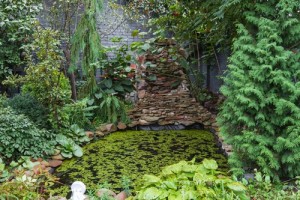Archive for Landscape Maintenance
Different Kinds of Irrigation Systems
If you are a farmer, gardener or even a landscaper you probably know how important it is to have an irrigation system installed to supply your plants, gardens or crops with water. Most irrigation systems are used during dry seasons when rainfall is scarce but since there are several types of irrigation it would be important for persons to identify which type would best serve their needs.
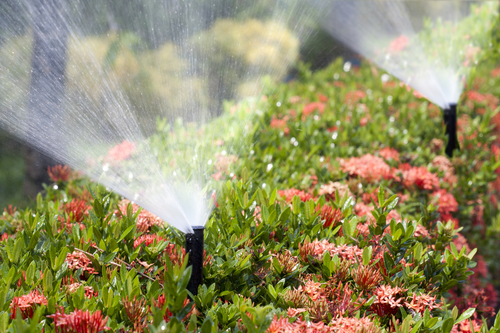
Lets Look At irrigation Systems
Irrigation techniques may differ in several ways but the basic concept of the system is that water is obtained from a source and is distributed to plants or crops. Generally the aim of the system is to equally and uniformly distribute specific amounts of water to each plant or crop.
Types of irrigation used include high or micro flow irrigation, sub-irrigation, in-ground irrigation, localized irrigation and even automatic irrigation systems. They are all utilized to best suit their specific purpose however the two, most, commonly, used systems are the high flow or micro flow irrigation systems.
With these two main types of irrigation systems one releases water with a high flow and the other distributes water with a low flow or a drip. The high flowing system operates so that water spreads heavily across the surface of the specified area, in order to wet and infiltrate into the soil and the low flowing system functions so that water falls in a dripping fashion and is delivered directly at the position of roots.
The high flowing system is mostly used when irrigating agricultural land. Here water levels that originate from the irrigation source and are used to flood or control the level of water in each distinct field. The flooding system is controlled by dikes which are slopes that help to regulate water levels. This form of irrigation is mostly seen with the cultivation of rice.
The low flowing or drip irrigation system as we know obtains water from a source and transports and delivers it to plants through emitters, mini rotors, micro sprays or drip lines in a dripping fashion where water goes directly to roots.This method has been seen as the most, water-efficient, method, of irrigation as it utilizes less water and once managed properly minimizes evaporation and runoff.
Since drip irrigation systems are the more domestic and commonly used system here are a few tips that can assist persons with operating and maintaining them so that they function as efficiently as possible.
For this type drip lines are most recommended and should be used for continuous rooting as they have flexible tubing containing tiny, water, flow, regulators, for evenly spaced water distribution.
Micro sprays and mini rotors clog easily, and should be regularly maintained. Monthly investigations should be conducted and if necessary repairs or replacements done to ensure there are no irregularities within the system.
Laying out emitters individually can also prove to be an efficient practice as this delivers water exactly where the plant needs. It reduces the amount of weeds produced and eliminates excess, irrelevant water. Persons also need to make sure that their drip system includes pressure reducers and filters as these ensure water is measured accurately and delivered at the specified rate.
Remember that these systems must be designed to prevent runoff, low head drainage and overspray. For more information on irrigation contact us.
Winter Plants – Part 1
Nature provides numerous varieties of winter plants that flourish in cold temperatures. There are winter plants that will flourish even in snowfall and there are others that can mirror their vibrant colors from the icicles hanging from your home.
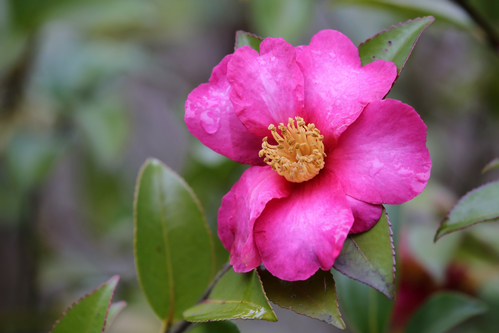
Winter Plants For A Breath Taking Scenery
One of the well-liked winter plants is the Camellia. This evergreen flourish from fall to early spring. With its brightly colored rose like flowers this plant provides a breathtaking difference to a sombre winter scenery. Camellia should be sowed in an area that have some sun but not too much
The winter-berry which is related to the holly and loses its leaves in fall is a great plant to have this time of year. You and your loved ones can enjoy the vibrant red berries that come into their own. The berries attract the birds during this time which is a sight to see and the birds will be happy for your blessings as well. You must plant the seeds during the fall in a small frame, then you can transplant them to fertile damp soil in the spring. However it is a slow growing winter plant, with its germination taking about 2 to 3 years.
Paper Maple has ringlets of copper colored bark flaking off all over and this constructs a pleasurable image both on the plant and while the leaves lay on the ground in all their splendor. During fall the green leaves change into a fascinating cinnamon shade and the plant grows in sunlight perfectly.
Red Twig Dogwood is an old-time golden boy as the color of the plant is sustained all year round. The boldness of the plant’s color relies on the sunlight it obtains. This is another incredible addition to consider in your garden during winter.
Firethorn is lasting and it has an appealing view all year. It has little bunches of glistening white flowers in spring and vibrant shiny green leaves the rest of the year. The little pea like berries can be either orange or yellow in color and these can survive until long after fall is over. The seeds should be sowed in the fall in a cold frame then transplanted to properly drained fertile earth in the spring.
If you want the best in lawn maintenance and advice contact us as DK landscaping. Our team of experts will help you give your garden the nutrients and the proper care it needs to survive and remain lush.
Winter Lawn Care Is Essential
Winter lawn care is no less as important as summer lawn care and maintenance. Your winter lawn care to-do list wouldn’t include activities such as trimming, weeding and watering however, care is important if you want your lawn to maintain its healthiness during the upcoming months. Depending on the location of your home you will have to determine the best plants to grow and maintenance methods to use in order to achieve this. If your lawn has weeds to spot-treat you can comply with these winter lawn care techniques.
Winter Lawn Care Techniques
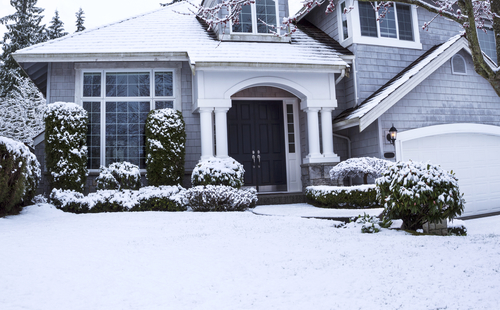
- Firstly, it is important to continue trimming your lawn even during the winter season. Note however, that there are several winter weeds that can’t endure frequent trimming and can die.
- Place a bag attachment onto your mower when trimming in order to capture seeds and prevent germination. In addition consider administering pre-emergent herbicide in the fall.
- Stop walking on your frozen lawn! Continuous walking or driving over a frozen lawn can kill its turfgrass crowns, which can create spring bare spots.
- If you can’t get all the autumn leaves eliminated before snowfall then not to worry as there is a solution for this. If the soil is damp, level it out carefully, as grass can pull up effortlessly. If you leave leaves on the grass during winter it can kill turf crowns. Moreover, they can lead to snow mold which can devastate your entire lawn.
Other Important Facts
Beware of vole trails that can be present in your lawn after snow fall. These mouse-like small creatures can be in both rural and suburban lawns. An abundant covering of snow on your lawn supply voles with the cover needed to devour grass roots in open lawn. this helps them to remain hidden from predators. As the snow liquefies their superficial runways become visible along the lawn veneer. The runways look like a tunnel without a top and soon as the snow softens you should trim your grass to prevent these critters from inhabiting your lawn.
If your lawn is wholesome you can leave out the grass seed. Another way to tackle the intrusion of voles is to obtain an outdoor cat. Contact us for more information and to inquire about our lawn care services.
Fall Garden Care
Fall is coming, and you should consider these useful tips as part of your garden care regime. After a flourishing summer of fighting weeds take pleasure in promoting a wholesome garden. This is truly a great time to entertain your family and friends in your backyard. By adhering to these easy fall garden care methods, you can ensure that it’s ready to be even more charming next spring.
Fall Garden Tips – Here’s What To Do
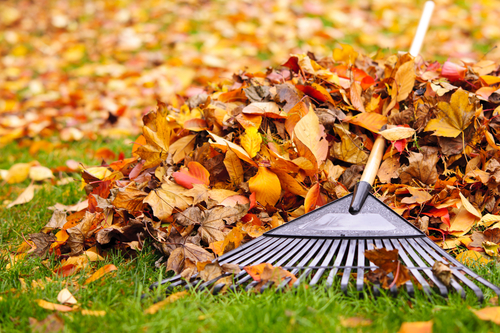
By the fall season, you should already be victorious in eradicating the weeds on your lawn. You should deal with any hold-outs before the leaves and snow make it too complex for you to handle. As it can be more difficult to handle the weeds. In addition, weeds can be extremely vigorous and can take over in the fall season when your lawn is less lively.
You should ensure that your lawn has an in-depth raking before snow falls. As time goes by, the leaves will begin to decay, depleting moisture out of the soil and encouraging a heartening dwelling for insects that may be damaging to your lawn. In addition, the plentiful layer of decomposed leaves may also leave behind dead spots in your lawn in the spring. Permitting weeds to rapidly move in and take over.
Over time, the soil of your lawn becomes flattened, decreasing the air pockets that permit nutrients and water to nourish the base of the roots. To fight this, ensure that you have your lawn aerated on a yearly basis. The best time to do this would be in the fall season. As it gives your lawn an opportunity to obtain the nutrients and water required for long term sustainability.
As your lawn matures it gets fatigued and the reproduction of your lawn decreases. Homeowners never want to see their lawns look unhealthy. It is suggested that your cover your entire lawn with grass seed before snow begins to fall. This will promote new lawn to start growing that will fill in the ailing areas. Consequently, next spring will have a winsome lawn outside.
There is an exceptional fall fertilizer that will assist your lawn with all the nutrients required to be wholesome in the fall season. This will encourage them to back even stronger in the spring season. It is better to fertilize early in the fall season to have your lawn charming and healthy in the autumn. Contact us and take pride in having a lawn that is luxurious.
How Irrigation Can Improve Your Lawn, Garden and Curb Appeal
The reasons that homeowners and businesses have irrigation systems installed are easy to understand. They’re trying to eke out more bang for their buck by going with irrigation advancements like micro irrigation, drip irrigation and spray tanks.
Irrigation is simply the best way to ensure that your home garden and lawn care needs are being met without having to worry about underwatering or overwatering.
Because irrigation and home sprinkler systems can be automated, you don’t need to fuss about achieving the best results possible.
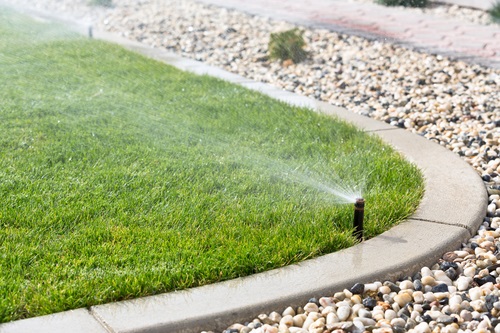
Irrigation Benefits Your Entire Property
You can even automate your system to behave differently in your garden versus your lawn, and you can also change up your watering cycles based on seasonal changes or plant growth.
Drip irrigation systems can also be extended to reach places that are just growing in or ones that didn’t exist when you originally installed the system. In terms of modifiability and adaptability to changing conditions, that’s pretty much the gold standard.
Especially when you’re dealing with a larger lawn in an arid region or a larger commercial property that needs virtually around-the-clock attention, an automated sprinkler system coupled perhaps with a drip irrigation setup can actually save you money long term. Homes benefit and conserving water, money and manpower is what it’s all about.
- Save Water, Conserve Manpower, Increase Curb Appeal
Drip irrigation is especially advantageous to homeowners and businesses in arid regions of the country that seasonally experience droughts, water shortages and steeper water prices (e.g., states like California).
The way that drip irrigation works – allowing water to drip down to different plants and root zones via pipes, emitters and valves – can consistently deliver more water to the roots and increase yields….all while saving water.
At the same time that you’re saving 50% more water compared to regular sprinkler systems, you’re getting better coverage and you’ll naturally experience less weed growth.
All of this together could very well bolster your curb appeal or, if you’re running a business, bring in more customers: A professional first impression goes a long way.
Incorporating Irrigation Into Your Lawn Care Routine
Business owners reading this might be scratching their chins and wondering whether they really need an irrigation system or if they can get by with simply watering twice a week. First off, you should realize that simply watering might not be enough.
If you’re running a commercial property, then irrigation is but one piece of the puzzle when it comes to maintaining a professional image. Mowing, mulching, fertilization, aeration and leaf removal might all be part of the overall picture in terms of getting the most out of your property or maximizing the curb appeal of your home.
That said, irrigation is one of those foundational lawn care services that really gets at the heart of landscaping. Why? Because irrigation delivers water right to the root source and if plants, trees and lawns don’t have enough water and sunlight they’ll definitely under-perform.
- Easy (and Expandable) Installation
While soaker hoses and sprinkler hoses might be the easiest-to-install and most DIY form of drip irrigation around, even professionally installed drip irrigation systems are relatively simple to install and shouldn’t require any excavation at all.
Because residential and commercial irrigation systems frequently rely on tubing, you can work with a landscape maintenance company to home in on the best location for the system. You can even move the system around if your needs change or power up/down the system to fit seasonal changes.
Drip irrigation systems efficiently deliver water right to the root source and are ideal for cost-efficiently achieving the best lawn possible. Consult with us on how you can benefit.
6 Xeriscape Ideas
Xeriscape gardens are specially built to require little to no irrigation. Instead, they’re specially constructed to use minimal water, and conserve the natural water (like rainwater) that enters their system. The end result is an environmentally-friendly garden that’s still beautiful.
Because xeriscape involves such skill and knowledge, it can be tricky to know where to get started. But with these six xeriscape ideas, you’ll get a head start on planning your garden.
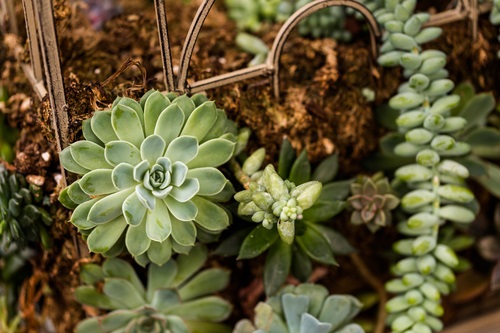
1. Think Beyond Cactus
Many people think xeriscape gardens are restricted to cactus and succulents. But most local plants are resistant to dry conditions in your area. Research native plants, or inquire with local gardening organizations, to find out what plants would flourish in your xeriscape garden.
2. Use Drip Irrigation
While many xeriscape gardens use no irrigation whatsoever, some use a form of irrigation called drip irrigation. Put small holes in a garden hose (or buy a hose specially perforated for this purpose), then lay it flat against the ground or near to it. Run this hose in the early morning or late evening, to minimize water loss due to heat.
The vast majority of the water through this slow drip system will get soaked up through the earth where it can nurture your plants, rather than getting lost to spray or evaporation. This is a good way to keep even drought-resistant plants through dangerous droughts, or to encourage your blooms to look their fullest during a dry season. To further maximize this method’s potential, place any plants that need more water close together, so they’re easier to water.
3. Try Perennials
Perennial flowers are more likely to be drought-resistant than annuals, and they’re lower maintenance, too. Try planting a group of perennial blooms close together to maximize their visual impact. For additional beauty, choose several perennials that will bloom at different times of year and plant them throughout your garden, to make sure you’ll always have something blooming.
4. Plan for Fall and Winter
Plants like Russian sage and many ornamental grasses dry out in the colder months. This is actually a positive: a well-planted standing will look like a dried bouquet. Add these to your xeriscape garden so there’s always something to draw the eye, no matter the season. You may even choose to avoid cutting back plants in colder months, to better take advantage of dried plants’ unusual shapes and appearances.
5. Fill Space with Rocks
Many xeriscape gardens gravitate toward gravel for open spaces. Gravel is great because it isn’t water-hungry like grass, and it holds moisture better than soil. But adding some beautiful rocks to cover space is a way to add texture and color to an area. Even just a small portion of rock garden adds character and variety to your xeriscape garden.
6. Play with Style
Not every xeriscape garden needs to look like a desert. With a little creativity and planning, xeriscape adapts well to any aesthetic or garden style. Don’t be afraid to think outside the box.
Xeriscape isn’t just environmentally friendly: it encourages creativity by imposing limits and forcing gardeners to think outside of comfortable tropes. Contact us and let us, plan and think creatively together. You’ll create a water-efficient space that’ll look its best in any season.
Use a Weed Eater and Get Rid of Pesky Shrubbery
If your property is saddled with unsightly shrubs that just keep getting in the way of the rest of your landscaping or even your walkways, the solution is our weed eater service. Shrubbery has a tendency to overgrow in every which way, causing all sorts of havoc. This is a common problem that can be cleared up by our weed maintenance team.
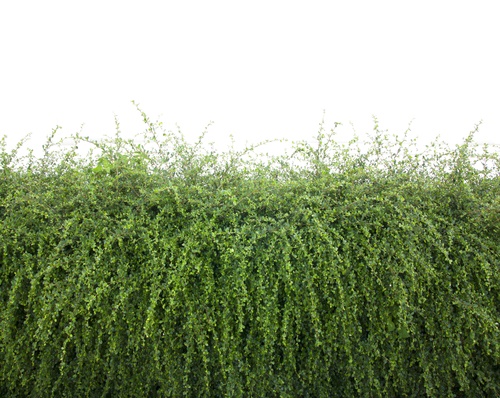
Do Yourself a Favor and Ally With the Weed Control Experts
Unruly shrubbery has the potential to ruin an otherwise beautiful yard. The weed control aficionados here at DK Landscaping know all the nuances about weed control products and weed control strategies. We will prevent wayward shrubs and weeds from overflowing onto surrounding components of your landscape. If you have any questions as to what the best way is to manage those pesky shrubs, do not hesitate to reach out to our experts. We know the ins and outs of weed control products as well as weed eating machines. Allying with our team has the potential to save you plenty of time, money and heartache.
Don’t Torture Yourself Attempting to Manage Shrubs by Hand
DK Landscaping has all the equipment that is necessary to get rid of those unruly shrubs once and for all. Too many homeowners make the mistake of trying to manage shrubs and weeds by hand. This is a waste of time and effort. You can trust our team to use our state of the art weed eaters to put an end to your shrub problem. It is a quite an easy solution compared to attempting to find a product that will keep those shrubs under control or using your hands to remedy the issue.
Our Weed Eater Equipment
DK Landscaping refuses to use anything but the highest quality metal blade edgers to trim shrubs and other aspects of customer lawns. This style of cut allows for superior precision and control to generate the cleanest possible cut. It is a stark contrast from our competitors who use string edgers that create wavy edges and ugly wide gaps. Such wavy edges and gaps look terrible and allow for conditions in which weeds and shrubs grow in all directions. You can rely on our shrubbery and weed experts to use our weed eaters with great care. Our team is well aware of the fact that these powerful machines move at speeds topping 4,000 revolutions per minute.
Shrub Beds are Quite Sensitive
There is absolutely no point in attempting a do it yourself (DIY) style shrub maintenance job in which you pluck shrubs/weeds out of the ground. Hand weeding actually leaves the roots intact so those annoying weeds and shrubs will keep on growing right back. Furthermore, using a low quality weed fabric will allow weeds to break through. Even attempting a DIY mulch job has the potential to exacerbate your shrub and weed problem. If you do not select the proper type of mulch, it will affect the soil’s warmth and consequently impact the growth rate of your shrubs.
DK Landscaping is Here to Help
You are not alone in your battle with these disorderly shrubs. When you ally with DK Landscaping to eliminate those pesky shrubs, you will no longer feel disappointed and annoyed when you look at your property’s landscaping. Our weed eaters will get right down to the core of the problem so you don’t have to invest one more second in shrub management. Reach out to DK Landscaping today to schedule a consultation and/or an appointment. We’ll discuss our services in-depth with you and provide a quote. Contact us today by dialing 707-280-3632.
About Watering Lawn After Mowing
Engaging in watering lawn? As the weather heats up, more people will be venturing out into their yards to mow, plant, trim, and generally get things spruced up. Mowing the lawn becomes an almost constant chore from the time the dandelions pop up in the spring until the leaves fall in the autumn. Whether you choose to mow your own lawn or hire experienced professionals, you may have some questions about watering your lawn after mowing.
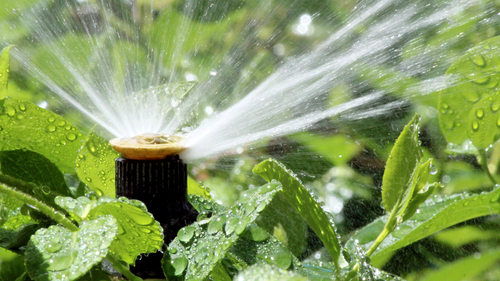
Setting a Schedule for Mowing
While mowing and watering are two separate chores which should both be scheduled, it’s important to leave room for flexibility for the days of drought and when it pours. The lawn needs mowing when the grass reaches a certain height and watering when the grass is dry. Those two events may or may not occur at the same time. Establishing a schedule to address these needs will help you make sure you aren’t wasting water or time. You should mow when grass reaches a height of about 3 to 4.5 inches. When it’s tall enough, trim it to about 2 to 3 inches. Depending on the season and type of grass, you may need to schedule mowing as often as every 5 days.
Setting a Schedule for Watering
Schedule your watering so that grass gets about 1.5 inches of water per week during the growing season. Time of day is also important to consider. Morning is an ideal time to water because it allows the grass to soak up the water before the heat of the day. Watering in the middle of the day wastes water because the sun speeds evaporation. In addition, watering too late in the day leaves insufficient time for the water to soak in before it cools off at night, potentially leading to fungal growth or other disease.
Knowing When to Water by the Color of Your Grass
Determining that grass needs water is a little tricky, but there are some things to look for. Grass that fades from bright green to a dull, bluish gray is probably thirsty. Also, look for signs of wilting, such as curling grass blades. Another trick is to look for footprints in the grass after you’ve been walking in the yard. Hydrated grass will spring back more than dried grass so, if you can see that you’ve left a trail, it’s time to water. One foolproof way to know if your grass needs a drink is to use a simple moisture meter, available at many garden stores. Or, utilize a rain gauge so that you know how much natural precipitation has fallen during the week.
A Pristine Lawn Takes Time and Attention
So, should you water after mowing? The simple answer is yes, but only if your grass needs the moisture. If you’ve had a rainy week and the grass isn’t showing footprints or other signs of dehydration, you can probably put off watering for a bit longer. If your lawn does need to be mowed and watered, make sure you schedule it for early in the day to avoid moisture evaporation and problems with disease. Don’t water your grass before mowing. Wet grass tends to clump together on the lawn which could suffocate the grass underneath or promote fungal growth. Also, it could clog up your mower.
Mowing is an essential aspect of home maintenance. A freshly-mowed lawn looks great, feels wonderful on bare feet, and helps keep invasive weeds in control. To handle all of your mowing needs, get in touch with the professionals at DK Landscaping today. You can trust us to keep your yard looking great for all seasons.
Layouts and Landscaping Small Backyards
They may be diminutive in size, but small backyards can be designed and landscaped in much the same way as their larger counterparts. From a quaint cottage-style yard to a modern, minimalist look, landscaping small backyards works best when you remember to design in square inches, not feet. In addition to this also use imaginative techniques such as creating multiple focal points, and use a varied selection of plants and shrubs. While backyards with limited space present a challenge, there’s nothing to prevent you from creating a cozy and charming retreat that can also work for family entertaining. To design a truly outstanding small backyard, follow these basic design and layout principles.
Inches, Not Feet
While most landscaping is planned out by the square foot, backyards with small footprints should be designed utilizing square inches, because fitting the amenities and plants you want in a tiny space requires a very precise layout. A mere two inches can make or break your opportunity to expand a raised planter wall to seat wall width; and just a six-inch difference here or there will determine whether you can have features such as ponds, fountains or fire pits.
Use Multiple Focal Points
Probably the biggest design challenge with small backyards is the lack of space to create that one standout focal point you often find in larger backyards. The solution, then, is to create many smaller, surprising focal points throughout your yard. Stone, ceramic, glass or metal accent pieces -new or vintage – can be arranged in such a way that they create an element of delight when discovered. For a distinct look, stay away from mass-produced items and make your small backyard uniquely yours by searching for one-of-a-kind pieces of garden art. For maximum effect, place your garden art amidst your plants, so they look as though they’ve always been there.
Don’t Stop at Green
Place bold and bright plants and flowers at the front of your small landscape so that they are the first thing to catch the eye upon entering the yard. They’ll also make the rest of the backyard recede, resulting in a larger feel to the space. Use plants with lots of texture, and try putting in a few large-leaf plants – they work wonders at changing the scale of small backyards.
Create Small Discrete Zones
As counterintuitive as it may sound, dividing a small space can actually make it seem larger. Try a tall hedge, fence, wall, or shrub to create a partition. Place furniture groupings and paths so that several small attractive and restful “rooms” are created.
Xeriscape Ideas for Small Backyards
Xeriscaping is one of the most popular landscaping options today, particularly in California, as it requires a minimal amount of water. In addition to reducing the need for supplemental irrigation, drought-tolerant landscaping can also be visually more interesting than other landscape options, and it will save you money. Xeriscape landscapes require very little turf, include plants that can withstand harsh elements and embrace designs that make small backyard landscapes really stand out:
- Use stepping stones and gravel to create a path and then fill in the side areas with native grasses.
- If you have stairs up to a deck or patio, fill them with gravel and native plants to add an unexpected touch.
- Choose low maintenance greenery that will thrive in your zone and don’t forget to opt for some colorful choices – the results can be stunning.
Bringing big design to small backyards is a great way to create a space for family and friends to dine and play. So contact us for consultation. Don’t be surprised if it becomes everyone’s favorite place to gather!
Garden Design for Dry Shady Gardens
When you’re looking to improve the landscape around your home or business, dry areas with shade can be tricky when it comes to garden design. Luckily the modern practice of xeriscaping has provided many solutions that can be used to get a beautifully landscaped property even when planting in dry shade.
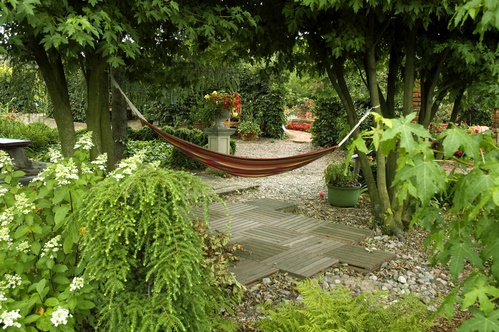
Basic Garden Design Principles
Any of the basics of good garden design apply to dry shady areas as well. You will want to think about how the area is going to be used, whether you prefer a casual or more formal style, and what your budget will be.
You will want to consider the size and shape of the plants and the visual lines they create. It can be helpful to start with the larger elements or focal points of your design, and then fill in the smaller details from there. Variety is necessary to create visual interest, but too many different colors, textures and plant species can create a chaotic look that lacks cohesive design. A common element such as a particular species of plant or a recurring color can help tie different areas together into an overall design.
For a successful dry shade garden design considering the water supply is vital. This is where consulting a landscape professional can be especially helpful. They will have ideas for making the best use of naturally available water. They may recommend grading an adjacent area to improve drainage, diverting extra water to a drier area. Including rain water harvesting in your garden design or changing irrigation methods may also be options.
The Importance of Plant Selection in Dry Shade Garden Design
One of the biggest decisions in garden design is choosing plants. You can get a garden design that is practical, unique and aesthetically pleasing, even in dry shade. It may limit your options a little more than having perfect growing conditions, but there are still plenty of plants to choose from. Skeptical? Check out this large list of plants for dry shade or this amazing list of native California drought tolerant plants. Many of these species grow just fine in shade. The growing popularity of xeriscaping means there are more plants available to homeowners and landscape professionals that tolerate dry conditions. Native plants will also grow better in dry shade since they are already adapted to local conditions.
One of the most useful garden design practices for dry shade is grouping together plants with similar water and nutrient requirements. Plants will not have to compete with each other to get what they need and will be more likely to thrive. Reducing the amount of turf lawn in a dry shady area or using grass varieties that require less water can also be helpful.
Soil Preparation is Key
When it comes time to make your new garden design a reality, soil preparation is especially important. The water and nutrient requirements of the new plants and condition of your existing soil will determine your exact course of action. In general, adding organic matter such as compost may be necessary. This will help your dry soil retain water and increase the nutrients available so your plants can thrive. Mulch also serves the same purpose and additionally deters weeds. Using these together will give your new plants the best chance to establish a good root system and promote growth.
While there are lot of things to consider in good garden design, the effort can save property owners money in the long run by reducing fertilizers, water, and maintenance. Get help with your landscape design and maintenance needs. Contact us today!


